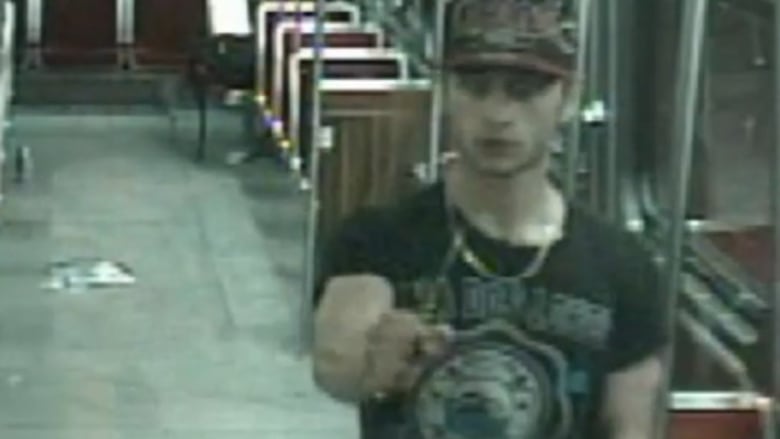'Call police,' shaking Sammy Yatim asked subway janitor before streetcar shooting
'He was very authoritative, very demanding,' janitor at Dundas subway tells court

Less than an hour before he was killed by a Toronto officer, a teen who died in a standoff on an empty streetcar repeatedly asked a stranger to call police, the trial of the constable charged in the shooting heard Friday.
Sammy Yatim didn't say why he wanted police to be called, but the subway janitor to whom he directed his request testified the 18-year-old appeared restless and displayed a sense of urgency.
"He was very authoritative, very demanding," said Anthony Sampogna of the encounter in July 2013.
"He started shaking, mostly his hands, and he said 'call the police, call the police."'
Sampogna was testifying at the trial of Const. James Forcillo, who has pleaded not guilty to second-degree murder and attempted murder in the case.
Forcillo's lawyers have suggested to the jury that Yatim's behaviour on the night he died indicated he was "in this for the fight all the way."
Jury hears of drug use
The jury has also heard that Yatim had consumed the drug ecstasy at some point before he was killed.
Sampogna said his interaction with Yatim began when the teen came up to him on the lowest level of the Dundas subway station and asked twice for the nearest exit, which the janitor pointed out.
After shuffling back and forth, Yatim then asked if Sampogna had a phone, to which the janitor replied he didn't, but suggested Yatim use a payphone or ask someone else, court heard.
Yatim stepped away once more and then returned to ask if Sampogna had any change -- the janitor said he didn't.
"He took a few steps, came back and put his hand in his backpack, he started to shake," Sampogna recalled, noting that's when Yatim asked him to call police.
- Sammy Yatim 'oblivious' to police warnings: eyewitness
- Bystander who filmed video of Sammy Yatim shooting testifies at trial
- James Forcillo trial hears officer had just passed use-of-force training
"I said 'OK sir, I'll call the police but I have to go upstairs to the collector,'" Sampogna said. "He came with me ... on the escalator he asked me again 'Are you going to call the police?"'
Sampogna said he told a fare collector about the teen's request but before it could be acted on, Yatim suddenly left the station.
Sampogna, who said he'd been rattled by the encounter because he was concerned Yatim might have a weapon in his backpack, took a break to calm down and then heard sirens when he returned to work.
"It got me thinking this could probably be the same individual," he said.
The jury has heard that Yatim boarded a streetcar outside the subway station and eventually pulled out a small knife, causing panicked passengers to rush off the vehicle, which came to an abrupt stop.
The jury has also seen surveillance videos which show Forcillo arriving at the scene and, after a 50-second confrontation, firing nine bullets.
Crown prosecutors have said they plan to prove that Forcillo's actions during the incident weren't necessary or reasonable.
Forcillo's lawyer has said his client's actions were justified and carried out in self-defence.
Toxicology evidence
A toxicologist testifying at Forcillo's trial Friday afternoon said an analysis of Yatim's blood determined he had certain amounts of ecstasy, marijuana and a derivative or "metabolite" of cocaine in his system at the time of his death.
In particular, the ecstasy found in Yatim's blood was considered a "moderate to moderately high concentration," said Inger Bugyra, who works at the Centre of Forensic Sciences.
Effects of the drug include restlessness, increased muscle movement, agitation, nervousness, aggression and panic attacks, she said.
Bugyra agreed with Forcillo's defence lawyer that Yatim could have consumed a larger quantity of ecstasy than what was detected in the teen's blood at the time of his death.
She also agreed that the drug can make a person move faster and make them more impulsive.